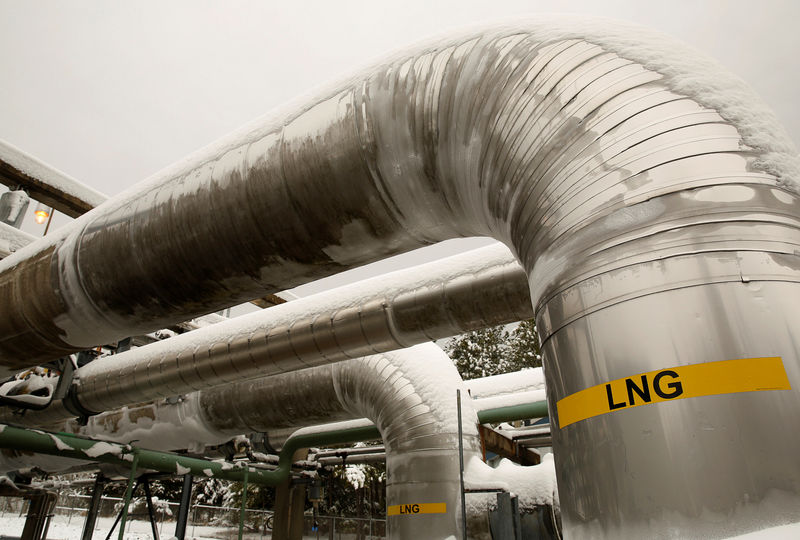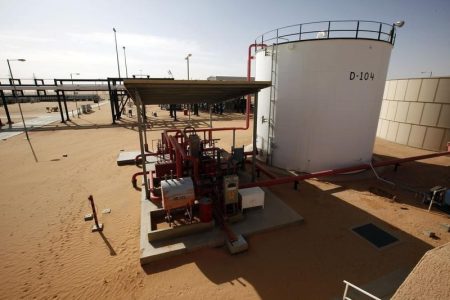Investing.com – US jumped 3% on Thursday, returning to the mid-$3 perch held two weeks ago, amid a smaller-than-expected storage build for last week and as bulls sought a hedge against concerns about an impending data blackout on associated gas production until mid-November.
The most-active December gas contract on the New York Mercantile Exchange’s Henry Hub settled up 10.1 cents at $3.477 per mmBtu, or million metric British thermal unit, after reaching as high as $3.543 during the session.
The rally came after US Energy Information Administration’s on gas for the week ended Oct. 20 came in at 74 billion cubic feet, or bcf.
That was still higher than the 61-bcf injection seen during the same week a year ago and the five-year (2018-2022) average increase of 66 bcf for this time of year. But it was lower than the 80-bcf build forecast by Wall Street’s analysts who follow natural gas.
“The EIA’s storage report came in at 74 Bcf, lower than the analyst average,” Gelber & Associates, a Houston-based advisory on energy trading, said. “Near term contracts along the forward curve saw a boost in price similar to the front-month contract in response to the (data_ release, and have rallied sharply since.”
The Gelber note said most weather models also foresaw what it described as “notably colder temperatures to the Lower 48” states in the coming week, a development that ought to positively impact the forthcoming gas storage report.
Since a key report from Rescom on associated gas will also not be published for another three weeks, traders sought a higher risk premium in Thursday’s market, the note said. Associated gas is a by-product of shale oil drilling and has been partly responsible for the record daily production of 103 bcf this week.
“The associated storage release through ResComm demand increases …will be unavailable until mid-November, as a planned EIA systems upgrade has caused the release to be delayed until the 16th,” Gelber said.
“That release will contain storage data for both next week and the week following. Without access to the prior week’s storage data that normally serves as a baseline to their models, analysts may be significantly off the mark, especially if fundamentals see notable shifts in the meantime. As a result, the potential for price volatility on the 16th is high.”
Until August came along, the year had been a maddening one for gas bulls, who got up each time only to get squashed again by record gas production, often benign weather that needed neither heating or cooling and spotty export demand for liquefied natural gas, or LNG.
The sum effect of all these, of course, was a stockpile overhang running double-digits higher than a year ago and looking impossible to clear right away.
Yet, like the skies opening up after a storm, things suddenly began to brighten up for gas longs over the past two months: Production started tapering, the volume of gas burned for power generation became consistent, LNG takeup improved and gas in storage started melting.
Yet, the nightmares of the past seemed to revisit the gas market last week after the US government’s on gas for the week ended Oct. 13 that came in at 17 billion cubic feet, or bcf, higher than the forecast level of 80.
That pulled December gas to a low of $2.88, signaling that the market could get boxed in again at the mid-$2 level it had been trapped in between February and July.
Latest storage report may have restored faith of gas bulls
But the latest EIA report seems to have restored the faith of gas bulls.
The government agency’s report for the week ended Oct 20 showed total storage at 3.7 trillion cubic feet, or tcf, up 9.2% from a year ago and 5.2% higher from the five-year average.
Both the percentages were up double digits just months ago.
Sunil Kumar Dixit, chief technical strategist at SKCharting, said gas bulls seemed poised to retain the upside momentum here.
“Stability above the 50-week EMA, or Exponential Moving Average, of $3.33 is a sign of strength for further upside, toward the next leg higher at the 200-week SMA, or Simple Moving Average, of $3.78,” Dixit said.
Read the full article here















